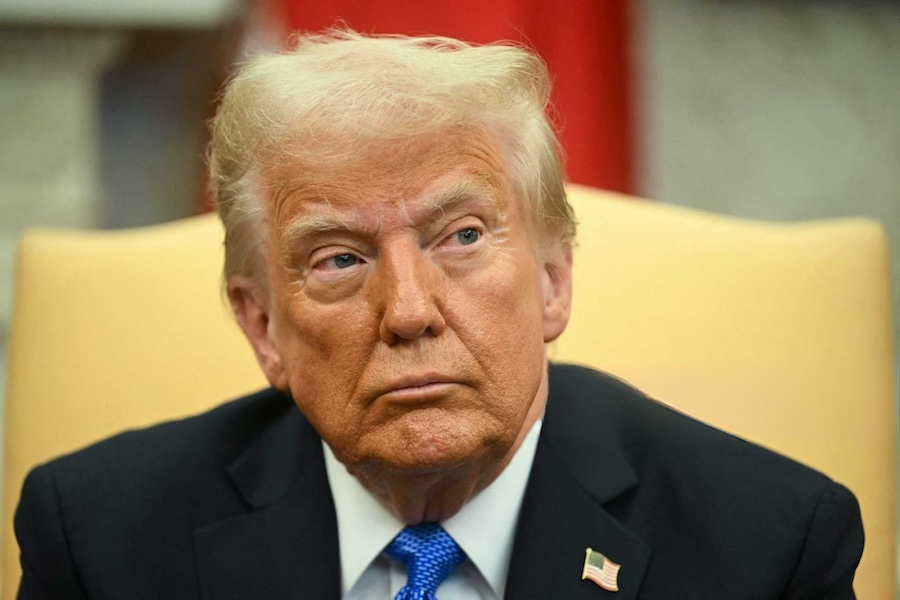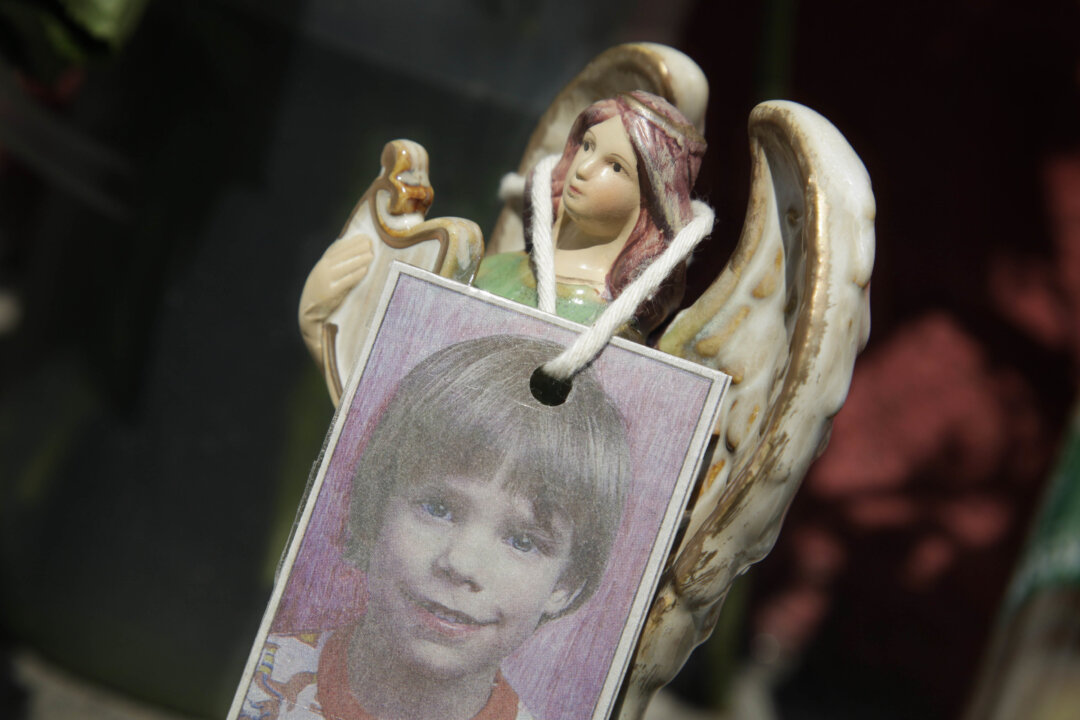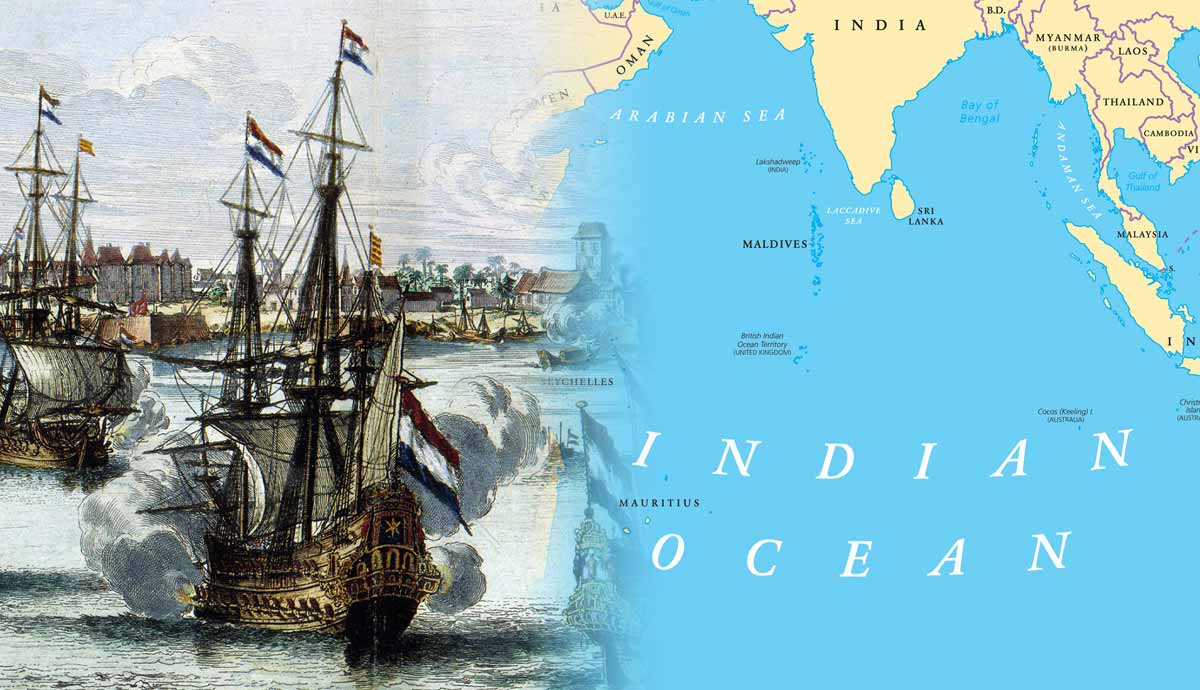0 Comentários
0 Compartilhamentos
6 Visualizações

Diretório
Elevate your Sngine platform to new levels with plugins from YubNub Digital Media!
-
Faça o login para curtir, compartilhar e comentar!
-
 YUBNUB.NEWSTell Me More: Gallego Reveals Eye-Opening Info About That 'Illegal Orders' VideoMy colleague Rusty Weiss reported on the troubling remarks of Sen. Ruben Gallego (D-AZ) regarding the video by six of his Democratic congressional colleagues and the news that the Department of War was0 Comentários 0 Compartilhamentos 6 Visualizações
YUBNUB.NEWSTell Me More: Gallego Reveals Eye-Opening Info About That 'Illegal Orders' VideoMy colleague Rusty Weiss reported on the troubling remarks of Sen. Ruben Gallego (D-AZ) regarding the video by six of his Democratic congressional colleagues and the news that the Department of War was0 Comentários 0 Compartilhamentos 6 Visualizações -
 YUBNUB.NEWSNEW: Trump Urges Supporters To Vote In Vital Special ElectionPresident Donald Trump on Tuesday urged supporters who reside in Tennessees Seventh Congressional District to make sure they vote in the states closely-watched special election, which will have0 Comentários 0 Compartilhamentos 6 Visualizações
YUBNUB.NEWSNEW: Trump Urges Supporters To Vote In Vital Special ElectionPresident Donald Trump on Tuesday urged supporters who reside in Tennessees Seventh Congressional District to make sure they vote in the states closely-watched special election, which will have0 Comentários 0 Compartilhamentos 6 Visualizações -
 YUBNUB.NEWSIf You Can Solve This Math Problem, Youre Smarter Than a University of California StudentAre you smarter than a 5th grader? Probably not if youre a University of California San Diego college student. As I discuss in an upcoming FPM+ Article, college students are routinely taking remedial0 Comentários 0 Compartilhamentos 6 Visualizações
YUBNUB.NEWSIf You Can Solve This Math Problem, Youre Smarter Than a University of California StudentAre you smarter than a 5th grader? Probably not if youre a University of California San Diego college student. As I discuss in an upcoming FPM+ Article, college students are routinely taking remedial0 Comentários 0 Compartilhamentos 6 Visualizações -
 YUBNUB.NEWSWorlds Strongest Woman Winner Disqualified After Being Found to Be a ManThe last 10 or so years of transgender madness have resulted in at least one semi-positive development. In short, we now understand from experience that people who abetted or celebrated diabolical lies0 Comentários 0 Compartilhamentos 6 Visualizações
YUBNUB.NEWSWorlds Strongest Woman Winner Disqualified After Being Found to Be a ManThe last 10 or so years of transgender madness have resulted in at least one semi-positive development. In short, we now understand from experience that people who abetted or celebrated diabolical lies0 Comentários 0 Compartilhamentos 6 Visualizações -
 YUBNUB.NEWSChina Seeks Trump's Help Stopping Japan from Supporting a Free TaiwanAs Beege described last week, the new Prime Minister of Japan had a great meeting with President Trump in October which was quickly followed by a war of word between China and Japan over the fate of Taiwan.0 Comentários 0 Compartilhamentos 6 Visualizações
YUBNUB.NEWSChina Seeks Trump's Help Stopping Japan from Supporting a Free TaiwanAs Beege described last week, the new Prime Minister of Japan had a great meeting with President Trump in October which was quickly followed by a war of word between China and Japan over the fate of Taiwan.0 Comentários 0 Compartilhamentos 6 Visualizações -
 YUBNUB.NEWSThis Is Why the Police Cant Fix CrimePeople keep talking about police defunding. And Mamdanis rise has rebooted that conversation. But the police have two basic functions. Theyre not likely to show up in time to save the victim0 Comentários 0 Compartilhamentos 6 Visualizações
YUBNUB.NEWSThis Is Why the Police Cant Fix CrimePeople keep talking about police defunding. And Mamdanis rise has rebooted that conversation. But the police have two basic functions. Theyre not likely to show up in time to save the victim0 Comentários 0 Compartilhamentos 6 Visualizações -
 YUBNUB.NEWSProsecutors Will Retry Man in Death of Etan Patz, Whose 1979 Disappearance Spotlighted Missing KidsA photograph of Etan Patz hangs on an angel figurine, as part of a makeshift memorial in the SoHo neighborhood of New York on May 28, 2012. Mark Lennihan/AP PhotoNEW YORKA notorious 1979 missing-child0 Comentários 0 Compartilhamentos 6 Visualizações
YUBNUB.NEWSProsecutors Will Retry Man in Death of Etan Patz, Whose 1979 Disappearance Spotlighted Missing KidsA photograph of Etan Patz hangs on an angel figurine, as part of a makeshift memorial in the SoHo neighborhood of New York on May 28, 2012. Mark Lennihan/AP PhotoNEW YORKA notorious 1979 missing-child0 Comentários 0 Compartilhamentos 6 Visualizações -
 YUBNUB.NEWSStephen Miller GOES OFF on the Seditious Six Democrats Who Urged Military to Defy Trumps Orders (VIDEO)Trump advisor Stephen Miller went off on the Seditious Six Democrats who urged the military to defy President Trumps orders. Without offering any specifics, Senators Elissa Slotkin (D-MI) and0 Comentários 0 Compartilhamentos 6 Visualizações
YUBNUB.NEWSStephen Miller GOES OFF on the Seditious Six Democrats Who Urged Military to Defy Trumps Orders (VIDEO)Trump advisor Stephen Miller went off on the Seditious Six Democrats who urged the military to defy President Trumps orders. Without offering any specifics, Senators Elissa Slotkin (D-MI) and0 Comentários 0 Compartilhamentos 6 Visualizações -
 WWW.THECOLLECTOR.COMHow the Indian Ocean Became the Cradle of Global TradeTrade in the Indian Ocean carried cultures, religions, ideas, food, and objects across vast distances, creating the foundations for global trade. Ships with boards sewn together by coconut fibers were guided by the regular patterns of the monsoon winds. Ivory and gold from East Africa would be brought as far as China, and religions took root in distant lands, merging foreign belief with local customs. Although not quite global, many of the objects that emerged from this trade network would lay the foundations of the modern world.Before the CompassSailing the Monsoon WindsTabula Rogeriana by al-Idrisi, 1154. This 12th century map of the known world was made by Muslim geographer al-Idrisi for King Roger II of Sicily. Source: Wikimedia CommonsFor centuries, movement on and across the Indian Ocean was shaped by the monsoon winds. These are seasonal wind patterns that blow in one direction for one part of the year, and blow back in the opposite direction during the latter part of the year. There were variations of monsoon winds within each pocket of the Indian Ocean, but what was certain was that these winds were consistent every year. This stability allowed merchants to plan accordingly, as they could accurately estimate their arrival to desired destinations.Because the monsoon changed twice per year, in cases of merchants travelling long distances, they would have to stay in port until the next monsoon, several months later, could carry them back to their native region. This fostered relationships between merchants and the local communities, resulting in cosmopolitan or culturally diverse port cities. This is how Islam spread as far east as Malaysia, Indonesia, and Singaporealthough it originated in Arabia, Islam arrived in Southeast Asia through the trade networks connecting ports throughout the Indian Ocean.From Malay to MadagascarOpening of a Malay Quran manuscript by an unknown artist, 19th century. Source: Wikimedia CommonsTrade on the Indian Ocean existed for centuries prior to the rise of Islam. Sailors from Malaya, a term referring to present-day Malaysia, Singapore, and Indonesia, arrived in East Africa at least by 100 BCE. This is why Madagascar today is a cultural blend between the Malaysian peninsula and East Africa in terms of its language, people, and traditions, synthesized through centuries of this trading relationship. However, after the rise of Islam, a religion that promotes trade and commerce, and the proliferation of Muslims throughout the Indian Ocean ports, distant areas became more entwined than before.This is because Muslim merchants became intermediaries between Muslim consumers and the producers or vendors of foreign objects, while directly coordinating the shipment of objects across the Indian Ocean. Prior to European arrival, some of the main trading ports were Kilwa (Tanzania), Mombasa (Kenya), Muscat (Oman), Aden (Yemen), Siraf (Iran), Surat and Cambay (west India), Goa, Calicut (southwest India), Kolkata (northeast India), the Bay of Bengal, Kalah Bar (Malacca Strait), then Guangzhou or Canton (China). Beginning with the Portuguese, Europeans entered into this Indian Ocean trade network in the late 15th century.There was also no single concept of merchant in the Indian Ocean, and the traders came from different religious and cultural backgrounds. While Islam was the dominant faith in the region, there were also Christians, Jews, Hindus, and Buddhists participating in the trade. Trading ports would echo with the sounds of a variety of different languages, although the lingua franca was Arabic.Trading VesselsIndian Ocean Dhow with Lateen Sail. Source: Wikimedia CommonsThe sailing vessels used for trade were made from wooden planks that were sewn together, rather than nailed, using coconut fibers. Coconuts had many uses in the Indian Ocean, so much so that they are referred to as the Swiss Army knife of the plant kingdom in Swahili, a culture and language present throughout East and Central Africa (Mugane, p. 60). In the Indian Ocean, this type of ship is popularly referred to as a dhow.The use of sewn boards as opposed to metal nails was not due to a lack of available resourcesinstead, many cultures across the Indian Ocean recognized that the magnetism within metal nails would adversely affect the sailing of the ship. Sewn planks addressed this issue. Dhows were also accompanied by the lateen or triangular sail, which may have had its origins with Malay sailors (Shaffer, p. 5). Its shape helped dhows properly capitalize on the monsoon winds. This sailing technology was eventually adopted by sailors from the Arabian Peninsula and Persia.Navigational TechnologySouth-pointing Chinese spoon, the origins of the first compass. Source: Wikimedia CommonsEmerging from this cross-cultural exchange throughout the Indian Ocean were technologies that provided us with the foundations of our modern world, some of which we still use today. Han Dynasty Chinese rulers and religious leaders used a spoon shaped like the Big Dipper constellation placed upon a flat board as a way to track the seasons. Over time, this technology developed into an early form of the compass. Its tail, made from the magnetic mineral lodestone, would point south (as opposed to the modern compass which points north), and the Chinese word for compass is south-pointing needle.In addition to revolutionizing sailing, this technology became a vital object for Muslims, as it was a requirement to face in the direction of Mecca during prayer. The transmission of the compass did not stay confined to the Indian Ocean, and Islamic merchants introduced it to Europeans, most likely via the Mediterranean. In a famous example, Christopher Columbus used the compass, albeit to no avail, when trying to find an alternate route to India.Chinese painting on paper by an unknown Han Dynasty artist, circa 25220 AD. Source: Wikimedia CommonsAnother form of technology originating in the Indian Ocean was that of paper-making. From China, this technology transmitted westward via Chinese prisoners of war, who were forced to remain in Samarkand (Uzbekistan) for ten years after their defeat at the Battle of Talas, a conflict between the Tang Dynasty and Abbasid Caliphate in 751 CE. Chinese paper proved more sturdy than fragile papyrus and was cheaper to make than vellum, or paper made from animal skin. Paper-making technology transferred into Europe, again via Muslims, around the 12th century, who readily adopted this technology.The Indian Ocean is the birthplace of another concept that revolutionized math, science, and technology. This was the invention of the number zero within present-day India as early as 499 CE. Zero was transformativeequations could be done faster, were more accurate, and now could be more complex. Although this number was perceived by Europeans to be an Arab invention, Arabs in fact referred to this number as a Hindi number, alluding to its South Asian origins. The concept of zero is central to the development of computing and the mathematics that enabled humans to send satellites to space.Natural MarvelsFragment of Indian cotton cloth by an unknown artist, 12th-14th century. Source: Cleveland Museum of Art, ClevelandSome natural objects traded in the Indian Ocean included cotton, silk, and indigo, which was used for creating navy blue dyes in clothing and other textiles. Spices such as cinnamon, cloves, and nutmeg were native only in Southeast Asia, but had a special place within food and medicine across different Indian Ocean cultures. The demand for these spices was so great that merchants of the Dutch East India Company (VOC) collapsed the society of the Banda Islands (Indonesia), the worlds only source of nutmeg, to monopolize their trade.China was one of the main producers of silk and silk cloth, a fiber made from the native Chinese silkworm. Silk was used for making clothing, Persian rugs, Islamic prayer mats, or was given as tribute. South Asia produced the highest quality cotton due to long-standing cotton cultivation and production traditions. Cotton was used as material for sails, bedding, and other textiles, but especially clothing. It was revered for its quality, softness, breathability, and color. A 17th century French merchant, Pyrard de Laval, even remarked that India clothed the world. The desire for cotton became one of the driving forces for Europeans to facilitate the Transatlantic Slave Trade.Human-Made MarvelsPrayer rug by an unknown Iranian artist, 16th century. Source: The Metropolitan Museum of Art, New YorkThe objects circulating the Indian Ocean trade network were products from specific regions, but in some cases, they were products of trade itself. Trade created a cross-cultural exchange of visual patterns, styles, and symbols that permeated objects such as Persian rugs and tapestries, ewers, and Chinese porcelain. Date palms and fig, peacocks, jasmine flowers, and almond trees were not native to China, but were included in designs on Chinese porcelain. This is because China was being influenced by objects coming in from Persia and Arabia in the form of textiles and silver vessels, whose intricate patterns and designs they adopted.Additionally, many pieces of Chinese porcelain refrained from depicting people, attributed to a large consumer base of Muslims, whose religion was against portraying idols. Simultaneously, Persian and Arabian producers were influenced by Chinese porcelainsome West Asian pottery even incorporated Chinese symbols such as dragons into their designs. Chinese influence is also evident in textiles and silver objects.Plate with fish by an unknown artist, mid-14th century. Source: The Metropolitan Museum of Art, New YorkAccentuating this feedback loop of influence and exchange was blue and white porcelain. The cobalt blue in this style of porcelain did not naturally exist in China, but was sourced only from Persia, which had a long tradition of using this mineral in art and objects. This mineral was brought to China slightly prior to 830 CEevidence of this is supported by the Belitung shipwreck, an Arab merchant ship that crashed off the coast of Indonesia near Belitung on its way back towards West Asia. It was carrying three porcelain bowls with cobalt designs in its cargo.However, after the consolidation of Asia by the Mongols in the 13th and 14th centuries, cobalt was brought in significant numbers to China through the promotion and stabilization of the Indian Ocean trade. Chinese artists used cobalt blue to create intricate designs that bore symbols from many cultures around the Indian Ocean. The finished product proliferated across trade networks and filtered into Europe. Porcelain, especially blue and white, was so highly sought after by Europeans that France sent a Jesuit missionary, Franois Xavier dEntrecolles, to try and uncover Chinas porcelain recipe. It was only after dEntrecolles success that factories began sprouting in Europe in the 18th century.Whoever controls the Indian Ocean will dominate AsiaThe Capture of Cochin and Victory of the Dutch VOC over the Portuguese in 1656, from the Atlas Van der Hagen, 1690. Source: Wikimedia CommonsThe above quote by Admiral Alfred Thayer Mahan, an influential 19th century United States naval theorist, highlights the significance of Indian Ocean trade to the rest of the world. The allure of the Indian Ocean world through its objects, technology, and spices is what enticed Europeans to try to assert themselves into this trade network after the 15th century, landing in the Americas during the process.While European powers exploited the commercial potential of their American colonies, they continued to compete against each other to establish colonies and obtain trading privileges in well-established Asian ports. The Columbian Exchange from the Old World to the New marks the foundation of the modern world, but this would have been impossible without the well-established lucrative Indian Ocean trade.BibliographyChaudhuri, K. N. Trade and Civilization in the Indian Ocean: An Economic History from the Rise of Islam to 1750, 1985.Mugane, John M. Story of Swahili. Athens: Ohio University Press, 2015.Pearson, Michael Naylor. The Indian Ocean. London New York: Routledge, 2003.Shaffer, Lynda. Southernization. In The New World History, 23: 24258. Berkeley: University of California Press, 2019.0 Comentários 0 Compartilhamentos 6 Visualizações
WWW.THECOLLECTOR.COMHow the Indian Ocean Became the Cradle of Global TradeTrade in the Indian Ocean carried cultures, religions, ideas, food, and objects across vast distances, creating the foundations for global trade. Ships with boards sewn together by coconut fibers were guided by the regular patterns of the monsoon winds. Ivory and gold from East Africa would be brought as far as China, and religions took root in distant lands, merging foreign belief with local customs. Although not quite global, many of the objects that emerged from this trade network would lay the foundations of the modern world.Before the CompassSailing the Monsoon WindsTabula Rogeriana by al-Idrisi, 1154. This 12th century map of the known world was made by Muslim geographer al-Idrisi for King Roger II of Sicily. Source: Wikimedia CommonsFor centuries, movement on and across the Indian Ocean was shaped by the monsoon winds. These are seasonal wind patterns that blow in one direction for one part of the year, and blow back in the opposite direction during the latter part of the year. There were variations of monsoon winds within each pocket of the Indian Ocean, but what was certain was that these winds were consistent every year. This stability allowed merchants to plan accordingly, as they could accurately estimate their arrival to desired destinations.Because the monsoon changed twice per year, in cases of merchants travelling long distances, they would have to stay in port until the next monsoon, several months later, could carry them back to their native region. This fostered relationships between merchants and the local communities, resulting in cosmopolitan or culturally diverse port cities. This is how Islam spread as far east as Malaysia, Indonesia, and Singaporealthough it originated in Arabia, Islam arrived in Southeast Asia through the trade networks connecting ports throughout the Indian Ocean.From Malay to MadagascarOpening of a Malay Quran manuscript by an unknown artist, 19th century. Source: Wikimedia CommonsTrade on the Indian Ocean existed for centuries prior to the rise of Islam. Sailors from Malaya, a term referring to present-day Malaysia, Singapore, and Indonesia, arrived in East Africa at least by 100 BCE. This is why Madagascar today is a cultural blend between the Malaysian peninsula and East Africa in terms of its language, people, and traditions, synthesized through centuries of this trading relationship. However, after the rise of Islam, a religion that promotes trade and commerce, and the proliferation of Muslims throughout the Indian Ocean ports, distant areas became more entwined than before.This is because Muslim merchants became intermediaries between Muslim consumers and the producers or vendors of foreign objects, while directly coordinating the shipment of objects across the Indian Ocean. Prior to European arrival, some of the main trading ports were Kilwa (Tanzania), Mombasa (Kenya), Muscat (Oman), Aden (Yemen), Siraf (Iran), Surat and Cambay (west India), Goa, Calicut (southwest India), Kolkata (northeast India), the Bay of Bengal, Kalah Bar (Malacca Strait), then Guangzhou or Canton (China). Beginning with the Portuguese, Europeans entered into this Indian Ocean trade network in the late 15th century.There was also no single concept of merchant in the Indian Ocean, and the traders came from different religious and cultural backgrounds. While Islam was the dominant faith in the region, there were also Christians, Jews, Hindus, and Buddhists participating in the trade. Trading ports would echo with the sounds of a variety of different languages, although the lingua franca was Arabic.Trading VesselsIndian Ocean Dhow with Lateen Sail. Source: Wikimedia CommonsThe sailing vessels used for trade were made from wooden planks that were sewn together, rather than nailed, using coconut fibers. Coconuts had many uses in the Indian Ocean, so much so that they are referred to as the Swiss Army knife of the plant kingdom in Swahili, a culture and language present throughout East and Central Africa (Mugane, p. 60). In the Indian Ocean, this type of ship is popularly referred to as a dhow.The use of sewn boards as opposed to metal nails was not due to a lack of available resourcesinstead, many cultures across the Indian Ocean recognized that the magnetism within metal nails would adversely affect the sailing of the ship. Sewn planks addressed this issue. Dhows were also accompanied by the lateen or triangular sail, which may have had its origins with Malay sailors (Shaffer, p. 5). Its shape helped dhows properly capitalize on the monsoon winds. This sailing technology was eventually adopted by sailors from the Arabian Peninsula and Persia.Navigational TechnologySouth-pointing Chinese spoon, the origins of the first compass. Source: Wikimedia CommonsEmerging from this cross-cultural exchange throughout the Indian Ocean were technologies that provided us with the foundations of our modern world, some of which we still use today. Han Dynasty Chinese rulers and religious leaders used a spoon shaped like the Big Dipper constellation placed upon a flat board as a way to track the seasons. Over time, this technology developed into an early form of the compass. Its tail, made from the magnetic mineral lodestone, would point south (as opposed to the modern compass which points north), and the Chinese word for compass is south-pointing needle.In addition to revolutionizing sailing, this technology became a vital object for Muslims, as it was a requirement to face in the direction of Mecca during prayer. The transmission of the compass did not stay confined to the Indian Ocean, and Islamic merchants introduced it to Europeans, most likely via the Mediterranean. In a famous example, Christopher Columbus used the compass, albeit to no avail, when trying to find an alternate route to India.Chinese painting on paper by an unknown Han Dynasty artist, circa 25220 AD. Source: Wikimedia CommonsAnother form of technology originating in the Indian Ocean was that of paper-making. From China, this technology transmitted westward via Chinese prisoners of war, who were forced to remain in Samarkand (Uzbekistan) for ten years after their defeat at the Battle of Talas, a conflict between the Tang Dynasty and Abbasid Caliphate in 751 CE. Chinese paper proved more sturdy than fragile papyrus and was cheaper to make than vellum, or paper made from animal skin. Paper-making technology transferred into Europe, again via Muslims, around the 12th century, who readily adopted this technology.The Indian Ocean is the birthplace of another concept that revolutionized math, science, and technology. This was the invention of the number zero within present-day India as early as 499 CE. Zero was transformativeequations could be done faster, were more accurate, and now could be more complex. Although this number was perceived by Europeans to be an Arab invention, Arabs in fact referred to this number as a Hindi number, alluding to its South Asian origins. The concept of zero is central to the development of computing and the mathematics that enabled humans to send satellites to space.Natural MarvelsFragment of Indian cotton cloth by an unknown artist, 12th-14th century. Source: Cleveland Museum of Art, ClevelandSome natural objects traded in the Indian Ocean included cotton, silk, and indigo, which was used for creating navy blue dyes in clothing and other textiles. Spices such as cinnamon, cloves, and nutmeg were native only in Southeast Asia, but had a special place within food and medicine across different Indian Ocean cultures. The demand for these spices was so great that merchants of the Dutch East India Company (VOC) collapsed the society of the Banda Islands (Indonesia), the worlds only source of nutmeg, to monopolize their trade.China was one of the main producers of silk and silk cloth, a fiber made from the native Chinese silkworm. Silk was used for making clothing, Persian rugs, Islamic prayer mats, or was given as tribute. South Asia produced the highest quality cotton due to long-standing cotton cultivation and production traditions. Cotton was used as material for sails, bedding, and other textiles, but especially clothing. It was revered for its quality, softness, breathability, and color. A 17th century French merchant, Pyrard de Laval, even remarked that India clothed the world. The desire for cotton became one of the driving forces for Europeans to facilitate the Transatlantic Slave Trade.Human-Made MarvelsPrayer rug by an unknown Iranian artist, 16th century. Source: The Metropolitan Museum of Art, New YorkThe objects circulating the Indian Ocean trade network were products from specific regions, but in some cases, they were products of trade itself. Trade created a cross-cultural exchange of visual patterns, styles, and symbols that permeated objects such as Persian rugs and tapestries, ewers, and Chinese porcelain. Date palms and fig, peacocks, jasmine flowers, and almond trees were not native to China, but were included in designs on Chinese porcelain. This is because China was being influenced by objects coming in from Persia and Arabia in the form of textiles and silver vessels, whose intricate patterns and designs they adopted.Additionally, many pieces of Chinese porcelain refrained from depicting people, attributed to a large consumer base of Muslims, whose religion was against portraying idols. Simultaneously, Persian and Arabian producers were influenced by Chinese porcelainsome West Asian pottery even incorporated Chinese symbols such as dragons into their designs. Chinese influence is also evident in textiles and silver objects.Plate with fish by an unknown artist, mid-14th century. Source: The Metropolitan Museum of Art, New YorkAccentuating this feedback loop of influence and exchange was blue and white porcelain. The cobalt blue in this style of porcelain did not naturally exist in China, but was sourced only from Persia, which had a long tradition of using this mineral in art and objects. This mineral was brought to China slightly prior to 830 CEevidence of this is supported by the Belitung shipwreck, an Arab merchant ship that crashed off the coast of Indonesia near Belitung on its way back towards West Asia. It was carrying three porcelain bowls with cobalt designs in its cargo.However, after the consolidation of Asia by the Mongols in the 13th and 14th centuries, cobalt was brought in significant numbers to China through the promotion and stabilization of the Indian Ocean trade. Chinese artists used cobalt blue to create intricate designs that bore symbols from many cultures around the Indian Ocean. The finished product proliferated across trade networks and filtered into Europe. Porcelain, especially blue and white, was so highly sought after by Europeans that France sent a Jesuit missionary, Franois Xavier dEntrecolles, to try and uncover Chinas porcelain recipe. It was only after dEntrecolles success that factories began sprouting in Europe in the 18th century.Whoever controls the Indian Ocean will dominate AsiaThe Capture of Cochin and Victory of the Dutch VOC over the Portuguese in 1656, from the Atlas Van der Hagen, 1690. Source: Wikimedia CommonsThe above quote by Admiral Alfred Thayer Mahan, an influential 19th century United States naval theorist, highlights the significance of Indian Ocean trade to the rest of the world. The allure of the Indian Ocean world through its objects, technology, and spices is what enticed Europeans to try to assert themselves into this trade network after the 15th century, landing in the Americas during the process.While European powers exploited the commercial potential of their American colonies, they continued to compete against each other to establish colonies and obtain trading privileges in well-established Asian ports. The Columbian Exchange from the Old World to the New marks the foundation of the modern world, but this would have been impossible without the well-established lucrative Indian Ocean trade.BibliographyChaudhuri, K. N. Trade and Civilization in the Indian Ocean: An Economic History from the Rise of Islam to 1750, 1985.Mugane, John M. Story of Swahili. Athens: Ohio University Press, 2015.Pearson, Michael Naylor. The Indian Ocean. London New York: Routledge, 2003.Shaffer, Lynda. Southernization. In The New World History, 23: 24258. Berkeley: University of California Press, 2019.0 Comentários 0 Compartilhamentos 6 Visualizações



